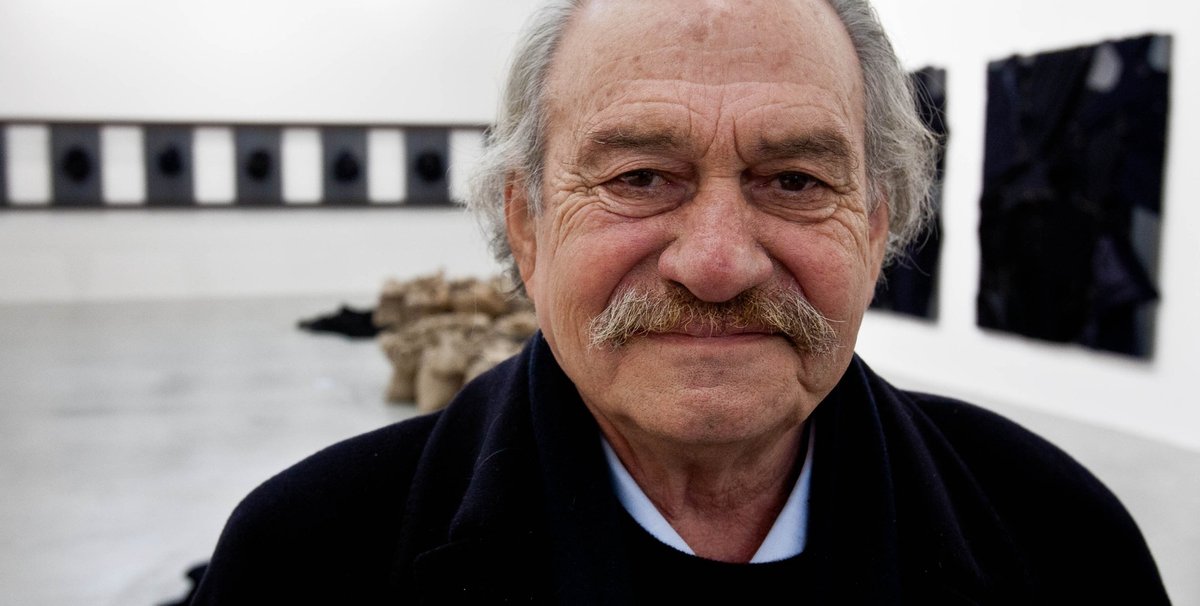The Greek-Italian artist Jannis Kounellis, one of the leading figures of the Arte Povera movement, died in Rome’s Villa Mafalda hospital, aged 80, according to Italian media reports.
Born in Piraeus , Greece in 1936, the artist moved to Rome at the age of 20 to study at the Academy of Fine Arts and considered the Eternal City his adopted home, where he continued to live and work. He had his first solo exhibition in 1960 at La Tartaruga gallery, a regular stomping ground for the city’s artists and intellectuals, but perhaps his most famous early show was in 1969, when he displayed 12 live horses in Rome’s Attic Gallery. (The work was recently recreated by New York’s Gavin Brown's Enterprise in June 2015.)
Kounellis was known for his use of lowly, often earthy materials in his work—coal, jute bags, steel, piles of stones—which tied him to the Arte Povera artists who used similarly “poor” media. The artist took part in the Venice Biennale for the first time in 1972 and became a regular contributor to the international exhibition. Over the years he has been the subject of solo exhibitions at international museums including the Museum of Cycladic Art, Athens (2012), Tate Modern, London (2009), the Neue Nationalgalerie, Berlin (2007), the Albertina, Vienna (2005), the Museo Nacional Centro de Arte Reina Sofia, Madrid (1996), the Castello di Rivoli, Turin (1988), the Whitechapel Art Gallery, London (1982) and the Stedelijk Van Abbemuseum, Eindhoven (1981).
The Art Newspaper interviewed the artist in April 2010, soon after it was announced that he would be taking part in the Vatican’s first pavilion at the 2011 Venice Biennale. When we asked him what he thought of Pope Benedict XVI’s call for artists to embark on a “quest for beauty”, Kounellis told us this:
“The Greeks used to say that beauty is like time; it changes: a person can be beautiful in the morning and not be so in the afternoon. A ‘form’ of beauty does not exist. Formalisation or clarity, on the other hand, are part of the family of beauty. Loving, too, is part of this family. If the Church says this, if it speaks of beauty in this sense, I am in favour of the Church. But if by beauty it means something else, I am opposed to it.”



